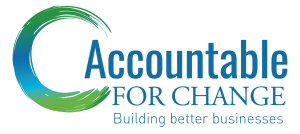Making good decisions is a business skill that many people take for granted.
My library is filled with books on proper questioning techniques. Some of my go to books includes: “Leading with Questions” by Michael Marquardt; “A More Beautiful Question” by Warren Berger; “The Five Most Important Questions” by Peter Drucker; “Encyclopedia of Positive Questions – Volume One” by Diane Whitney, David Cooperrider, Amanda Trosten-Bloom and Brian S. Kaplan.
As kids, our first words included “why” not just once, rather, repeatedly. Through our intense sense of curiosity, we asked questions, first starting with “why”. I have often been amazed at now how many times in a business setting, the room is silent when someone asks “do you have any questions?”. Some people say they are shy, while others say they are more concerned with the ramifications of asking something dumb. In between these two positions is the concern with being tasked to solve the problem if you speak up.
But how can making good decisions be possible if someone does not speak up … if someone does not ask questions?
Let’s start with something simple … the 5 Whys methodology. We teach our clients this methodology because it helps solve problems fairly quickly. By asking why five times they can drill down to the root cause of any issue. That’s the average – 5 times – and it requires practice to avoid being led into a loop. This methodology is good for solving people issues as well as determining the different causes of a problem.
The 5 whys is a good methodology to follow when asking these basic 4 problem solving questions:
- What is the problem?
- What are the causes of the problem?
- What are the possible solutions?
- What is the best solution?
By combining the 5 whys methodology with the above basic framework, you are making good decisions. The decision making process is more strategic. Your goal is to clarify the problem and then to determine the causes of the problem by thinking outside the borders of what is obvious.
Below is an example of how to use the 5 whys as it relates to a sales issue:
Problem:
Why are our sales dropping?
Possible causes:
We don’t have enough sales people
Our sales people don’t know how to sell
Our product has become outdated
We don’t have enough customers
Our competitors are too good
We apply the Pareto Analysis to the above options by saying that 20% of the above options (1 of the 5) is causing 80% of the low sales. Then which option is it? Identify the option and then frame it as the next “why” question
Why don’t our sales people know how to sell?
Repeat the process, but be sure to keep track of the “why” questions and remove all options that have been out voted and write the remaining option directly under the preceding “why” question. By doing so you can visually show the series of high priority “why” questions and avoid being led into a loop. A loop is where the preferred option is an answer from earlier on in the process which loops you back.
Why ask questions?
The importance of asking questions and in particular, asking why – you only need to look to the top business failures for an education of the ramifications of failing to do so. Think Enron. Enron at one time was the 7th largest company in the United States valued at $90 billion. Think Arthur Anderson, it was one of the Big 5 public accounting firms in the world. However, both collapsed. After the collapse, we learned people were shredding documents, using improper accounting practices, engaged in large scale insider trading and had started partnerships with their own shell companies. People on a large scale who had nothing to do with the actions of a few lost their jobs, their savings and retirement futures. Sadly, furthermore, people not responsible for the “galloping greed” attributed to the Enron scandal lost their jobs.
As a business leader, you have earned the right to ask “why” in the best interest of your company and your people. Teach your people how to ask the right questions so that decisions made have a positive impact on your organization.
